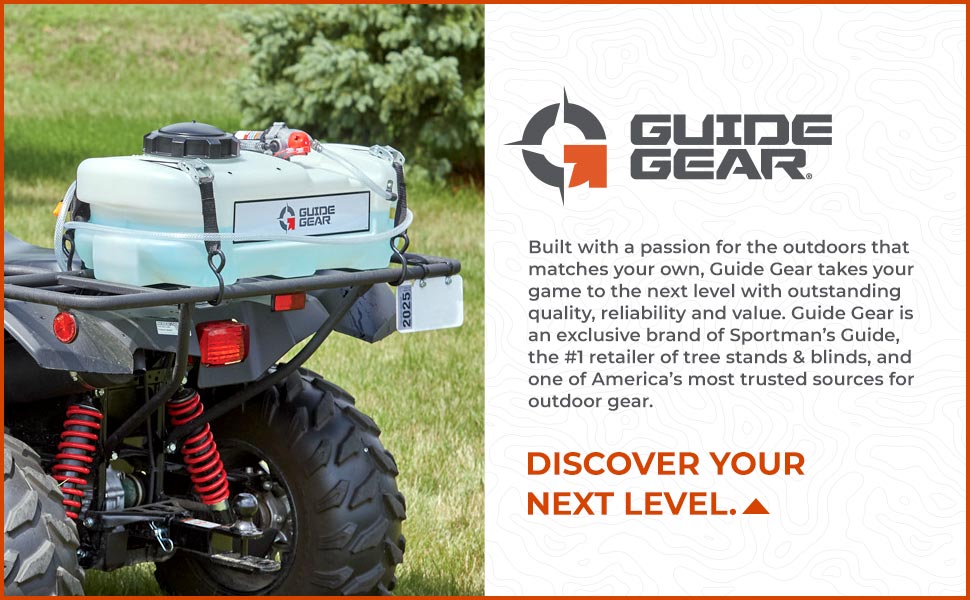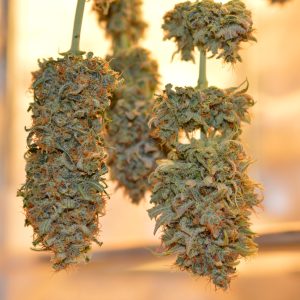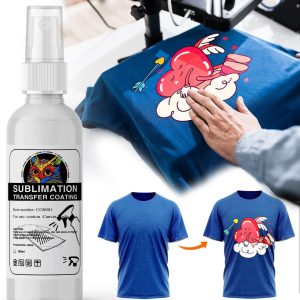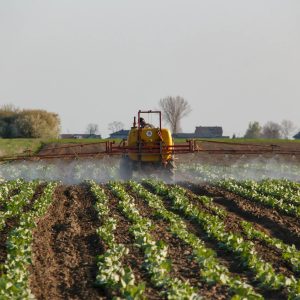
Whether you’re managing a large agricultural operation, maintaining extensive landscaping, or tackling pest control across vast properties, an ATV sprayer represents one of the most versatile and efficient tools in your arsenal. These powerful attachments transform your all-terrain vehicle into a mobile spraying station, allowing you to cover significant ground while maintaining precision and control over your application process.
The modern ATV sprayer has evolved far beyond simple tank-and-nozzle setups. Today’s systems incorporate advanced pump technology, GPS guidance capabilities, and precision application controls that rival commercial-grade equipment. This comprehensive guide explores everything you need to know about selecting, operating, and maintaining ATV sprayers for maximum effectiveness and return on investment.
What is an ATV Sprayer and How Does It Work?
An ATV sprayer is a specialized attachment system designed to mount on all-terrain vehicles, converting them into mobile spray application platforms. These systems typically consist of several key components working in harmony: a chemical tank ranging from 15 to 200 gallons, a high-pressure pump system, a distribution manifold with multiple outlets, spray booms with adjustable nozzles, and an electronic or manual control system.
The fundamental operation begins with the chemical tank storing your liquid solution, whether it’s herbicide, pesticide, fertilizer, or water for dust suppression. The pump system, often powered by the ATV’s electrical system or a separate engine, pressurizes the liquid and delivers it through the distribution network. Modern ATV sprayer systems incorporate variable-rate technology, allowing operators to adjust application rates based on terrain, wind conditions, and target requirements.
What sets professional-grade ATV sprayers apart from basic models is their ability to maintain consistent pressure and flow rates regardless of ground speed or terrain variations. Advanced systems include features like auto-rate controllers that automatically adjust chemical flow based on GPS-tracked ground speed, ensuring uniform application across varying conditions. This technology prevents over-application in slow areas and under-application when covering ground quickly.
Types of ATV Sprayers: Finding the Perfect Match for Your Needs
Boom ATV Sprayers
Boom-style ATV sprayers represent the gold standard for large-area applications. These systems feature extendable spray arms that can reach widths of 8 to 21 feet, dramatically increasing coverage efficiency. The boom arms typically fold for transport and storage, making them practical for diverse property layouts. Professional boom ATV sprayers often include individual nozzle shut-offs, allowing operators to eliminate spray overlap and reduce chemical waste.
The key advantage of boom ATV sprayers lies in their ability to maintain consistent spray patterns across wide swaths. Each nozzle is precisely positioned to create uniform coverage without gaps or overlaps, resulting in professional-quality applications. Many boom systems also incorporate height adjustment mechanisms, allowing operators to optimize spray angle and penetration based on target vegetation height and density.
Spot ATV Sprayers
For precision applications and targeted treatments, spot ATV sprayers offer unmatched flexibility. These compact systems typically feature hand-held spray guns or wands connected to the main tank via high-pressure hoses. This configuration allows operators to dismount and treat specific areas while maintaining access to the main chemical supply.
Spot ATV sprayers excel in situations requiring selective treatment, such as invasive species control, fence line maintenance, or treating areas inaccessible to boom systems. Many models include both boom and spot-spray capabilities, providing maximum versatility for diverse property management needs. The ability to switch between broadcast and precision application modes makes these systems ideal for comprehensive vegetation management programs.
Boomless ATV Sprayers
Boomless ATV sprayer systems utilize specialized nozzles that create wide spray patterns without physical boom arms. These systems typically employ flat-fan or flooding nozzles positioned strategically to achieve coverage widths of 20 to 40 feet. While they sacrifice some precision compared to boom systems, boomless sprayers offer significant advantages in rough terrain and heavily wooded areas.
The primary benefit of boomless ATV sprayers is their ability to navigate tight spaces and uneven terrain without boom damage. This makes them ideal for forestry applications, pasture management, and properties with significant obstacles. However, operators must pay careful attention to overlap patterns and wind conditions to maintain application uniformity.
Key Features to Consider When Selecting an ATV Sprayer
Tank Capacity and Material Construction
Tank capacity represents one of the most critical decisions when selecting an ATV sprayer. Smaller tanks (15-25 gallons) offer better maneuverability and reduced weight but require frequent refilling. Medium-capacity tanks (40-60 gallons) provide an excellent balance between coverage and handling, while large tanks (100+ gallons) maximize efficiency for extensive operations but may stress ATV suspension systems.
Modern ATV sprayer tanks utilize either polyethylene or fiberglass construction. Polyethylene tanks offer superior chemical resistance and impact tolerance, making them ideal for rough terrain applications. Fiberglass tanks provide smooth interior surfaces that resist chemical buildup and facilitate thorough cleaning between applications. Many premium tanks include graduated sight gauges, allowing precise mixture ratios and remaining volume monitoring.
Pump Systems and Pressure Control
The pump system serves as the heart of any ATV sprayer, determining application pressure, flow rate, and overall performance reliability. Diaphragm pumps represent the most common choice for ATV applications, offering excellent chemical compatibility and self-priming capabilities. These pumps handle a wide range of chemicals without degradation and can run dry without damage.
Advanced ATV sprayer systems incorporate variable-pressure pumps with electronic controls, allowing operators to fine-tune application parameters for different chemicals and target conditions. Pressure regulation systems maintain consistent output regardless of engine RPM variations, ensuring uniform application quality. Many systems also include pressure gauges and flow meters for precise monitoring and documentation.
Nozzle Selection and Spray Pattern Control
Nozzle selection dramatically impacts ATV sprayer performance and application quality. Different nozzle types create distinct spray patterns optimized for specific applications. Flat-fan nozzles provide excellent coverage for broadcast herbicide applications, while hollow-cone nozzles excel at penetrating dense vegetation canopies. Flooding nozzles offer wide patterns ideal for boomless applications.
Modern ATV sprayers often incorporate quick-change nozzle systems, allowing operators to switch between different spray patterns without tools. This flexibility enables rapid adaptation to changing conditions or application requirements. Some systems include individual nozzle shut-offs and flow meters, providing precise control over application rates and patterns.
Installation and Setup: Getting Your ATV Sprayer Ready for Action
Mounting Considerations and Weight Distribution
Proper installation begins with evaluating your ATV’s weight capacity and distribution requirements. Most ATV sprayers mount to the rear cargo rack, but larger systems may require front-mounted tanks or specialized mounting frames. Weight distribution significantly impacts handling characteristics, particularly on steep terrain or during sharp turns.
Professional ATV sprayer installations often include reinforced mounting brackets and tie-down systems to prevent tank movement during operation. The mounting system should allow tank removal for maintenance and storage while providing rock-solid stability during use. Consider systems with quick-disconnect fittings that facilitate rapid tank removal without tools.
Electrical Integration and Control Systems
Modern ATV sprayers require electrical integration for pump operation and control systems. Most systems operate on 12-volt power drawn from the ATV’s electrical system, requiring appropriate wiring and fuse protection. Advanced systems may include digital displays, GPS integration, and wireless remote controls.
Proper electrical installation includes weatherproof connections, adequate wire gauge for pump power requirements, and easily accessible manual shutoffs. Many operators install dedicated electrical panels with switches, gauges, and control modules in easily viewed locations. Consider systems with low-voltage protection to prevent battery drainage during extended operations.
Operation Best Practices: Maximizing Efficiency and Safety
Pre-Operation Inspection and Setup
Every ATV sprayer operation should begin with a comprehensive pre-flight inspection covering all system components. Check tank integrity for cracks or damage, inspect pump connections for leaks, verify nozzle condition and alignment, and test electrical systems for proper operation. This routine prevents costly downtime and ensures safe operation.
Calibration represents a critical pre-operation step often overlooked by operators. Proper ATV sprayer calibration involves determining actual application rates under field conditions, accounting for ground speed, pressure settings, and nozzle wear. This process ensures accurate chemical application rates and prevents costly over-application or treatment failures due to under-application.
Application Techniques and Pattern Management
Effective ATV sprayer operation requires understanding spray pattern overlap and application uniformity. Most boom systems require 30-50% overlap between passes to ensure complete coverage without gaps. Operators should establish consistent ground speeds and maintain steady pressure throughout applications.
Wind conditions significantly impact ATV sprayer effectiveness and drift potential. Best practices include avoiding applications during high wind conditions, adjusting nozzle height to minimize drift, and using drift-reduction additives when appropriate. Consider application timing to take advantage of optimal weather conditions and target plant physiology.
Maintenance and Troubleshooting: Keeping Your Investment Running Strong
Routine Maintenance Schedules
Regular maintenance ensures ATV sprayer longevity and consistent performance. Daily maintenance includes thorough system cleaning, inspection of wear parts, and lubrication of moving components. Weekly maintenance should include detailed pump inspection, nozzle cleaning and replacement, and electrical system checks.
Seasonal maintenance involves comprehensive system overhaul, including pump rebuild, complete tank cleaning, and storage preparation. Many operators maintain maintenance logs documenting service intervals, parts replacement, and performance issues. This documentation helps identify patterns and prevent costly breakdowns during critical application periods.
Common Issues and Solutions
ATV sprayer troubleshooting often involves pressure-related problems. Low pressure typically indicates pump wear, clogged strainers, or internal leaks. High pressure may result from restricted nozzles or malfunctioning pressure regulators. Uneven spray patterns usually indicate nozzle wear, incorrect pressure settings, or boom alignment issues.
Pump problems represent the most common ATV sprayer failures. Symptoms include erratic pressure, reduced flow rates, or complete pump failure. Regular maintenance and proper chemical compatibility prevent most pump issues. Keep spare pump parts and rebuild kits on hand for quick repairs during critical application periods.
Top ATV Sprayer Brands and Models: Market Leaders and Innovations
Professional-Grade Systems
Several manufacturers dominate the professional ATV sprayer market, each offering unique advantages and specialized features. Fimco leads in innovation with their variable-rate controllers and GPS integration options. Their 40-gallon ATV sprayer systems provide excellent balance between capacity and maneuverability, while their larger 95-gallon units serve commercial operations.
NorthStar represents another market leader, focusing on durability and versatility. Their ATV sprayer systems feature reinforced tanks, heavy-duty pumps, and comprehensive warranty coverage. Many NorthStar models include both boom and spot-spray capabilities, providing maximum operational flexibility.
Budget-Friendly Options
Entry-level ATV sprayers serve property owners with occasional spraying needs or limited budgets. Brands like Chapin and Field Tuff offer basic systems with essential features at attractive price points. While these units may lack advanced features like variable-rate control or GPS integration, they provide reliable performance for basic applications.
When evaluating budget ATV sprayers, focus on build quality and warranty coverage rather than just price. A slightly more expensive system with better components and support often provides superior long-term value. Consider purchasing decisions based on total cost of ownership rather than initial price alone.
Cost Analysis and Return on Investment
Initial Investment Considerations
ATV sprayer costs vary dramatically based on capacity, features, and build quality. Basic 15-gallon systems start around $500-800, while professional 60-gallon systems with advanced features can exceed $3,000-5,000. Commercial-grade units with GPS integration and variable-rate control may cost $8,000-15,000 or more.
When evaluating ATV sprayer investments, consider the total cost including installation, training, and ongoing maintenance. Factor in chemical costs, labor savings, and improved application quality when calculating return on investment. Many operations find that ATV sprayers pay for themselves within 1-2 seasons through labor savings and improved effectiveness.
Operational Cost Savings
ATV sprayers offer significant operational advantages over traditional broadcast sprayers or manual application methods. Time savings represent the most obvious benefit, with ATV systems covering 10-20 times more area per hour than manual methods. This efficiency translates directly to labor cost savings and increased treatment capacity.
Chemical cost savings often exceed labor savings through improved application accuracy and reduced waste. Proper ATV sprayer calibration and operation can reduce chemical usage by 20-30% while maintaining or improving treatment effectiveness. This accuracy also reduces environmental impact and regulatory compliance risks.
Safety Considerations and Best Practices
Personal Protective Equipment
ATV sprayer operation requires appropriate personal protective equipment (PPE) to prevent chemical exposure and ensure operator safety. Basic PPE includes chemical-resistant gloves, long-sleeved shirts, long pants, and closed-toe shoes. Eye protection and respiratory protection may be required depending on chemical labels and application conditions.
Many ATV sprayer operators underestimate drift exposure risks during application. Even with careful technique, operators may encounter chemical drift during windy conditions or when treating overhead targets. Consider enclosed cabs or supplied-air systems for extensive commercial applications or when handling highly toxic materials.
Environmental Protection
Responsible ATV sprayer operation includes protecting non-target areas and sensitive environmental features. Buffer zones around water bodies, bee-attracting plants, and neighboring properties prevent accidental contamination. Many operators use GPS systems to map sensitive areas and establish automatic shut-off zones.
Proper chemical storage and disposal represent critical environmental responsibilities. Store chemicals in original containers in secure, well-ventilated areas away from heat sources. Dispose of empty containers and unused chemicals according to local regulations. Maintain detailed application records for regulatory compliance and stewardship documentation.
Future Trends and Innovations in ATV Sprayer Technology
Precision Agriculture Integration
The future of ATV sprayer technology lies in precision agriculture integration and smart application systems. GPS-guided variable-rate technology allows operators to create prescription maps that automatically adjust application rates based on field conditions, soil types, or vegetation density. This technology maximizes treatment effectiveness while minimizing chemical usage and environmental impact.
Drone integration represents an emerging trend in ATV sprayer operations. Drones equipped with multi-spectral cameras can identify problem areas requiring treatment, creating detailed application maps for ATV sprayer systems. This combination provides unprecedented precision and efficiency for large-scale vegetation management programs.
Autonomous and Semi-Autonomous Systems
Several manufacturers are developing autonomous ATV sprayer systems capable of operating with minimal human intervention. These systems use GPS guidance, obstacle detection, and pre-programmed application maps to perform routine spraying operations. While still in development, autonomous systems promise to revolutionize large-scale property management operations.
Semi-autonomous ATV sprayers currently available include auto-steering systems that maintain straight lines and prevent overlap while operators control speed and application decisions. These systems reduce operator fatigue during long applications while improving application quality and consistency.
Conclusion: Making the Right ATV Sprayer Choice
Selecting the right ATV sprayer requires careful consideration of your specific needs, budget constraints, and operational requirements. Whether you need a basic spot sprayer for occasional use or a sophisticated boom system for commercial operations, the key lies in matching system capabilities to your actual requirements rather than simply choosing the least expensive or most feature-rich option.
Remember that an ATV sprayer represents a long-term investment in your property management capabilities. Focus on systems from reputable manufacturers with proven track records and comprehensive support networks. Consider total cost of ownership including maintenance, parts availability, and potential upgrades rather than just initial purchase price.
The modern ATV sprayer market offers solutions for virtually every application and budget. Take time to evaluate your specific needs, consult with dealers and other operators, and consider starting with a proven system that can grow with your operations. With proper selection, installation, and maintenance, a quality ATV sprayer will provide years of reliable service and dramatically improve your property management efficiency.
For more information on specific ATV sprayer models and applications, visit reputable agricultural equipment dealers and manufacturer websites to explore the latest innovations and find the perfect system for your needs.





